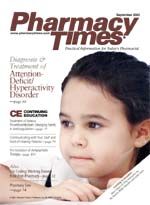Publication
Article
Pharmacy Times
Hospitals Are Not Ready for SARS
Although federal and local health officials are preparing for a possible new outbreak of severe acute respiratory syndrome (SARS), congressional investigators report that hospitals may not be prepared because they lack key personnel and equipment.
As of press time, worldwide SARS had sickened >8,400 people and killed at least 812. In Toronto, Canada, there were about 250 cases and 39 deaths. The United States had 73 cases and no deaths.
Despite the fact that SARS has now been globally contained, experts at the World Health Organization believe that it may return with colder weather, and, if so, the number of SARS cases could be higher than before. A recent report from the General Accounting Office (GAO), the investigative arm of Congress, said that, in a large-scale outbreak, entire hospital wards and their staff might be needed as SARS isolation facilities. Also, entire hospitals might need to be designated SARS hospitals. The GAO warned that, if there is a SARS outbreak during the peak flu season, hospitals could experience severe overcrowding. ?Most hospitals lack the capacity to respond to largescale infectious disease outbreaks,? the report stated.
For example, few hospitals have the proper staff or equipment, such as N-95 respirators, needed to care for large numbers of potentially infectious patients. A GAO survey of >2000 hospitals found that these facilities did not have the supplies and equipment needed to handle an outbreak. Aside from more equipment, hospital officials said that they need capital improvements, including quarantine and isolation facilities and air handling and filtering equipment.
?We need regional and national plans for dealing with a large-scale outbreak of SARS, said Sen Norm Coleman (R, Minn), chairman of the Senate Government Affairs investigations subcommittee. ?We saw in Toronto that SARS can quickly overwhelm even a modern health care system if the first cases are not quickly contained. When this happens, regional and national resources must be available to fill the gap,? he said.







